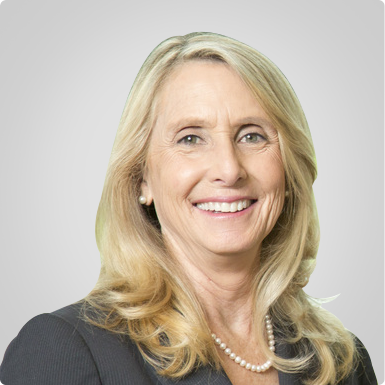LMA CME Co-Chairs

Jennifer Mir, Practice Development Director, Munger, Tolles & Olson LLP Melissa Hoff, Consultant, MBH Strategies
The LMA West Region Continuing Marketing Education conference “Nexus of Change” underscored marketing’s position at the core of rapid changes taking place in law firms. Competition with peer firms, alternatives to law firms, emphasis on diversity, and more, are forcing marketers to evolve their thinking and take a leadership role to drive effective outcomes.
The conference focused on three fundamental areas: a macro view of the changing industry; how changes are impacting legal marketers; and managing ourselves as individuals so we can adapt to these changes. Within this were eight key takeaways to riding the wave of change:
- Instead of continuing to do things the same way, legal marketers need to be champions in changing law firm behavior to focus on collaboration and selling value, rather than the cost of production and the bottom line. Look at the tools on hand – operations, talent, technology and financials – and put a game plan together to take specific next steps.
- Focus on communication and collaboration – within your firm and with clients – to create more value. Put less emphasis on the billable hour and consider how to leverage internal resources differently to better dictate the right fee arrangement.
- Launch a cross-practice initiative to move away from silos of information within the firm and create more business opportunities. Get a rainmaker on board to obtain buy-in from other attorneys, and develop an internal information sharing process to set the stage for success.
- All of your attorneys won’t be natural rainmakers. Consider hiring an outside business development coach or utilizing your marketing/business development team for coaching to enhance your attorneys’ business development skills. Develop a system for tracking new relationships and new business to measure success.
- Put together a crisis plan in advance of having a crisis so you can own the narrative and get ahead of the issues. If a crisis does occur and you don’t have all of the answers, be transparent.
- Help litigators understand that business development involves the same skills as being a litigator. Identify the unique business development traits in each attorney, and work to leverage those.
- Understand that you can’t operate 24/7 without negatively impacting your productivity and well-being. Take time to laugh, breathe, or simply take a five minute break to refocus on a single task.
- Utilize facts rather than “story language” in your communications with colleagues to establish credibility and avoid anger. This will ultimately improve productivity and create better employee relationships and satisfaction.
If you were unable to attend the conference, the following provides an overview of each of the sessions and additional takeaways on the changing landscape of the legal profession, law firms and legal marketing.
Great Law and the Role of Law Firm Marketing Leader
Debra Baker, Esq. – Managing Director, GrowthPlay |
Debra introduced the audience to the concept of “Great Law” and challenged the audience to ask “What if?” – what if we could attract the best and most profitable clients that we were excited to represent; what if we had a firm that retained not only the best talent, but also the best humans; what if we could build a sound business model that also provided the opportunity to give back to the community?
Great Law underscores the importance of collaboration and selling value, rather than the cost of production and the bottom line. She sees three core components:
- Being a great lawyer: Lawyers who are willing to step back and say, who do I want to be and what am I good at?
- Offering great business: Great law is about great business – your business intelligence and business model. Firms that move away from silos and focus on collaboration will add more value to clients and make more money.
- Retaining and nurturing great people: Focus not only on retaining talent, but also helping them grow into being great salespeople and leaders.
The above is based on changing behavior in law firms. Firms can have detailed plans and strategy in place, but if they can’t change their behavior and actually implement the strategy, they will fail.
Hallmarks of successful, high-performing firms include:
- Doer vs. Seller: mastery of sales fundamentals
- Growth leadership and pipeline management
- Strategic focus: people, profit, purpose
- Client experience cultivation
- Sales enablement tools
- Ongoing “great law” innovation
Firms need to pivot and instead of doing what’s always been done, start emphasizing getting it done the right way. To get the ball rolling, Debra suggested legal marketers do the following:
- Have conversations with three people outside of LMA to discuss their thoughts on changing law firm behavior.
- Debrief with your team after the CME conference, looking at the tools at hand: operations, talent, technology and financials.
- Identify specific next steps and build on them.
Legal marketers can’t wait for lawyers to create change; they need to take the first step.
Pricing, Procurement and the Roles of Legal Operations (CLOC) and the Marketing Department

Connie Brenton – President & CEOCorporate Legal Operations Consortium |
Mary Shen O’Carroll – Head of Legal OperationsGoogle and Corporate Legal Operations Consortium |
|
Jeff Franke – Chief of Staff to the GC & AGC of Global Legal OperationsCorporate Legal Operations Consortium |
Gia Altreche – Director of Business Development & MarketingNewmeyer and Dillion |
Lisa Waligorski – Director of FinanceNewmeyer and Dillion |
Brian Fanning – Pricing DirectorDavis Wright Tremaine LLP |
|
David Bruns – Director of Client ServiceFarella Braun + Martel LLP |
This session honed in on a consistent conference theme, “collaboration,” as it relates to setting fees, obtaining new business and operations.
Assessing Operations and Efficiency
Several panelists are members of a relatively new and important organization: Corporate Legal Operations Consortium (CLOC – https://cloc.org). CLOC’s current membership consists of those in an emerging field – that of legal operations. Ideally, these professionals are embedded within the corporate legal departments and focus on the business aspects of in-house legal departments. They have joined together to identify and develop best practices, as well as standards, such as RFP templates, that can be used across all industries. This organization will impact outside law firm operations. CLOC plans to open up membership to law firms.
Traditionally, in-house legal departments have not been focused on the costs or efficiencies of running their departments. In-house attorneys have generally been judged by the volume of transactions or matters they process, or the size of matters they work on. CLOC seeks to help legal operations professionals and other core corporate legal industry players, such as law firms, optimize legal service delivery models.
CLOC recommended firms looking to offer value to clients, not just legal services, should consider the following:
- Focus on cross-training attorneys to offer more value to clients.
- Consider different fee arrangements for different matters. Factors such as speed of work-product turnaround and exposure in terms of reputation, can help dictate the right fee arrangement.
- Offer basic technology such as digital transformation, workflow technology and electronic signature. Not making use of what was referred to as “simple” technology, such as DocuSign, can go against you in a competitive situation.
- Be prepared not to make a lot of money off of associates. This is where the current business model fails.
Moving Away From the Billable Hour
When attorneys think of the term “pricing,” most think of a specific number and getting from point A to point B. The panel noted that law firms need to shift away from this billable hour mindset to an advanced method of pricing which includes: people and roles, policies, process and tools. Firms need to consider how to leverage internal resources to collaborate and price differently, while adding value for clients, rather than focusing on the billable hour.
Understanding Expectations
Panelists agreed that determining fees starts with the prospective client relationship. Get a better understanding of the prospect’s expectations and what’s important to them, ask questions and open a dialogue before you present your proposal, and most importantly, don’t assume the prospect is thinking what you’re thinking. Having a conversation about fees and an understanding of goals from the outset, can help reflect the value in pricing. For example, a law firm’s pricing may be based on the presumption that the in-house client thinks of “communication” as an extensive analysis, whereas the GC may only want a weekly phone recap.
Identifying Trends & Opportunities
In the current corporate legal ecosystem, the goal is to move 20% of legal outsourcing to 50% of the total spend. Outside counsel would represent 80% of this 50%, and alternative providers would represent 20%. The panel pointed to an opportunity for law firms to partner with alternative providers to create value-add offerings.
Law firms are under the erroneous impression that in-house counsel has more data on legal processes than that of law firms, but this is not the case. Too, in-house attorneys often aren’t as familiar with options along the alternative fee spectrum, and how they work. Outside counsel should take advantage of its data to share with in-house counsel, as well as using this data to set fees. In-house counsel only has its own data to compare, and appreciates being given examples and comparisons.
Busting Silos: How to Turn the Concept of Cross-Selling into Practice
Aleisha Gravit – Chief Client Services and Marketing OfficerAkin Gump, Strauss, Hauer & Feld LLP |
Jaime Sheldon – Director of Business DevelopmentAkin Gump, Strauss, Hauer & Feld LLP |
Most law firms conduct strategy and business development at the practice level, essentially creating silos of information. By operating in this manner, Aleisha and Jamie recognized there were missed opportunities at their firm and launched a successful cross-practice initiative.
Implementing cross-selling is not without its challenges. The team took one year to get it in place. Jamie “helicoptered” over all of the business development professionals in each practice area, working with them to identify synergies and cross-pollinating information.
In addition to identifying opportunities, finding synergies across practices and laying out a plan, there are a few key elements they recommend to ensure success:
- Get a rainmaker connected to the initiative and obtain their buy-in. Rainmakers are the entryway to clients, and will be a cheerleader for other lawyers along the way. Make sure they’re aware of specialized experts in the firm to leverage in client discussions.
- Share information internally and assess whether tools/resources can be tweaked to provide a more collaborative approach. Be careful not to overshare or complicate the information; make it accessible and useable for attorneys.
- Understand that marketers will need to hunt down information and not rely on attorneys to offer the information. Put a process in place to follow up on presentations, client meetings, etc.
Measuring Success
It can be difficult to measure success, however, setting a few metrics from the outset can help track progress:
- Determine the number of practices that are serving top clients.
- Track new matters opened.
- Track client feedback and wins/losses.
- Identify revenue generated post-launch.
- Identify guidelines on whether to continue investments.
Then take time to reflect on everything. Partner retreats, when you’re setting practice budgets or during strategic planning meetings, are ideal opportunities to determine what’s working, and what’s not. Remember that determining success or failure is fluid, and the goal of cross-selling is to open the door to internal conversations and create opportunities.
Business Development Coaching – How to effectively coach your attorneys to gain a competitive edge
Doug Ott – ConsultantDoug Ott Consulting LLC |
Vickie Spang – Chief Marketing OfficerSheppard Mullin Richter & Hampton LLP |
When deciding to embark on professional coaching for your attorneys, understand that you’re working with a range of personalities, and one size doesn’t fit all. However, Vickie and Doug shared a few proven techniques that can set the stage for success:
- Get organized. Work with the attorney to pull together a database of contacts and targets. Don’t overcomplicate it. An Excel spreadsheet is fine, if that’s the technology you have and will use.
- Make it clear that coaching is optional. Every attorney won’t take advantage of or flourish in this opportunity, so make sure you’re investing your time and resources in those that truly want to be coached.
- If you have the resources, hire an outside coach. This brings instant credibility to the process. It also allows for open dialogue between the attorney/coach, whereas using someone from within the firm may not create a comfortable situation for the attorney. This also helps to create accountability.
- If you’re going to rely on the firm’s marketing/business development team to handle coaching: identify the attorney’s personal passion; understand there is a different level of entry point for a partner versus an associate – you can’t have the same expectations for each; keep the coaching “homework” manageable to get traction, then build from there.
- Send out a statement from your managing partner/chairman so the attorneys understand that the firm supports this initiative.
- Have the attorneys make a financial investment in their coaching, even a small one, so they have skin in the game and remain committed.
Measurement Tools
Using revenue to measure success is ideal, but not realistic. Instead, use a relationship tracker – even something as basic as an Excel spreadsheet – to get the attorney’s information from their head onto paper. Over the next year or two, look at the originations of those being coached – did they increase? Tracking how many contacts attorneys are turning into meaningful relationships and then into clients, is much more effective than simply counting the number of networking events and lunches they attended.
Pepsi-Proofing’ Your Comms Plan – Lessons Learned from Corporate Missteps
Zach Olsen – PresidentInfinite Global |
Jean-Luc Renault – Communications ManagerJenner & Block LLP |
The recent Equifax, United, Pepsi and other notable communications crises, taught us that oftentimes, a crisis doesn’t evolve from the initial issue itself, but from the response and actions after the fact. While it’s important to address situations quickly, particularly given the demand of the internet and social media, it’s even more important to respond effectively.
You can’t prepare for all crises, but your ability to prepare and respond when it happens will define success. The following are Zach and Jean-Luc’s recommended steps to take now, so you’re not left scrambling:
- Ideally, put together a crisis plan in advance of having a crisis.
- Determine how to build your crisis team and who should be part of it. Your managing partner isn’t always an ideal team member.
- Identify your various buckets of risk and get ahead of the issues.
- Identify your internal and external audiences, and what they care about.
- Develop a plan for different scenarios and have protocols in place so you can own the narrative.
- If a crisis does occur:
- Be transparent. If you don’t have all of the answers yet, say so.
- Don’t offer help with strings attached.
Business Development for Litigators
Craig Brown – Law Firm Business Development Consultant, LawVision |
Legal marketers often receive pushback from litigators when it comes to marketing and business development efforts – too busy, don’t want to specialize, work is coming in anyway. Craig charged legal marketers with helping litigators understand that business development involves the same skills as being a litigator:
- Preparing
- Issue spotting
- Asking questions to uncover facts
- Analyzing implications
- Suggesting problems to solutions.
Craig went on to explain that the litigator personality is not what the world may think –outgoing, sales oriented, etc. Legal marketers should identify the unique business development traits in each attorney, and work to leverage those.
The following are Craig’s litigator success elements for developing new business:
- Build awareness in tight niches. Educate others about your practice; don’t assume others know what you do.
- Work with referral sources in a more focused way. You won’t develop business by just talking about golf and kids. Use triggers – stories about what you do – so referrals understand the scenario and will know to call you.
- Leverage the firm – an internal sale is a sale like any other – and build trust among colleagues.
- Use tools that formalize relationship building. Before a case is over, create a relationship so it continues after.
- Turn awareness activities into relationship activities. Use the marketing pipeline to build credibility and create new relationships.
- Be yourself. Leverage your personality traits and interests to develop long-term referral relationships.
The Science of Productivity, Performance and Personal Satisfaction: Getting Things Done with Less Stress
Judith Gordon – Founder, Performance Coach, Facilitator, LeaderEsq, LLC |
Judith’s presentation examined the interaction between stress, well-being and productivity, and the research behind how they’re interrelated. One of the primary principles discussed is that we are cognitive. We’re more than cognitive beings, but as service professionals, we rely immensely on our thought processes. We want to function optimally as much of the time as possible. Technology has greatly interrupted this and led us to believe we need to operate 24/7, which is simply not possible without fatigue and stress entering the equation.
In this interactive session, Judith shared applicable tools to help manage stress and increase productivity in the workplace:
- Laugh: Laughter immediately reduces stress in the body. So go ahead, take a break and watch those funny YouTube cat videos!
- Drink water: If you’re dehydrated, your brain cannot properly function at full capacity. Even 1% dehydration starts to interfere with thought processes, and 2% leads to fatigue and mental fog.
- Manage stress: Humans have the unique capacity to ruminate and even create our own stress. Recognizing when we’re stressed and utilizing the following, can help manage stress levels.
- Proper breathing. Utilize the 6-3-6 full torso breathing method by breathing in for 6 seconds, pausing for three seconds, and exhaling for six seconds.
- Facial clench. Try clenching the muscles in your face for a few seconds and then relaxing them.
- Practice good posture. If you’re hunched over, your brain thinks it’s in danger or in hiding.
- Focused attention: Multi-tasking actually negatively impacts the effectiveness of our work, as demonstrated in Judith’s interactive audience activity. Allow your brain to interrupt itself, but then re-focus on a single task. Take breaks – meditate, day dream or take a 5-minute walk.
- Know who you are: If you’re not a morning person, don’t set new client meetings at 8 am. Focus yourself on high value tasks and delegate low value tasks to others.
Speak Up! Crucial Conversations Lead to Effective Outcomes
Cricket Buchler – Master Trainer, VitalSmarts |
Using facts rather than “story language” – what we think happened – in our dialogue, can improve productivity and create better employee relationships and satisfaction. Facts use specifics rather than perceptions, and starting a discussion with facts, helps to avoid starting out with anger.
Cricket emphasized the importance of leading with facts to establish credibility and to get on the same page as the other person. It also provides an opportunity to confirm what happened. This allows us to go into a conversation with an open mind and understand if the other person sees it differently. The following examples demonstrated fact language versus story language:
Fact Language:
I thought we agreed…
I have noticed that…
I have observed that…
Story Language:
I’m starting to think that…
I’m beginning to wonder if…
My sense is…
Cricket then asked attendees to think of a current workplace situation and practice fact language to begin incorporating it in future discussions. She encouraged participants to take what they learned and share it with colleagues.
Wrap-up
Kudos to conference chairs Jennifer Mir and Melissa Hoff on organizing a successful program filled with dynamic, thought-provoking sessions.
The panelists did a tremendous job of providing practical and actionable next steps for marketers to take back to their firms. We hope everyone will share their experiences in the coming year so we can continue to learn from each other’s successes and challenges.
Be sure to mark your calendars for the 2018 LMA Annual Conference from April 9 – 11, 2018 in New Orleans – see you there!
Berbay creates the visibility and credibility that fuels law firms’ revenue growth.


